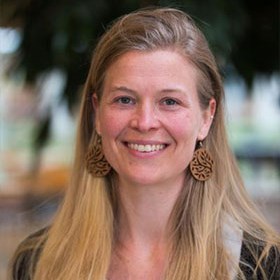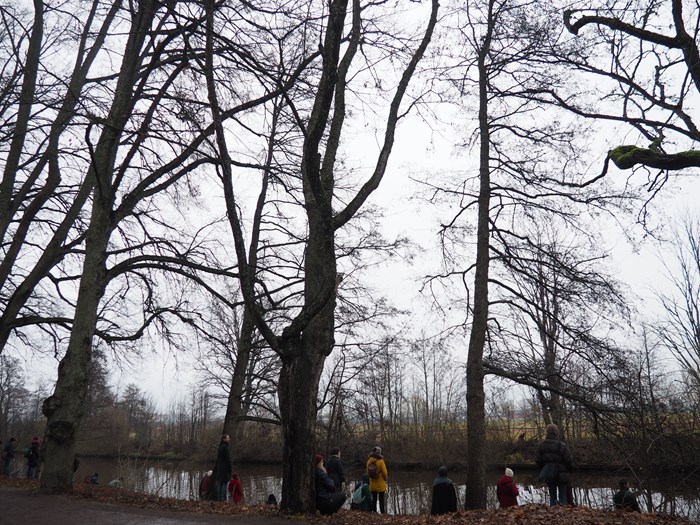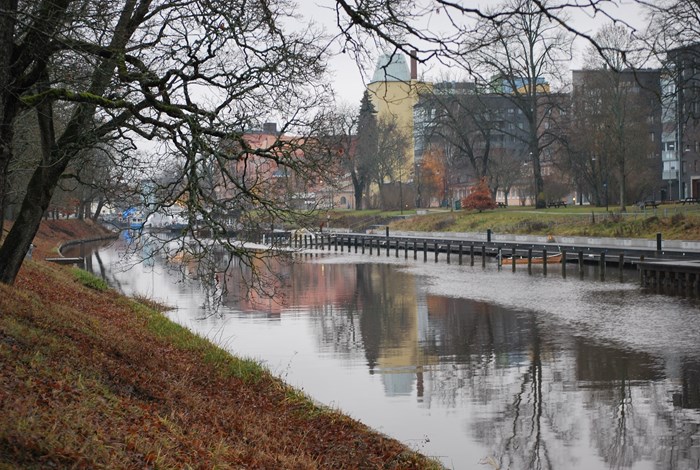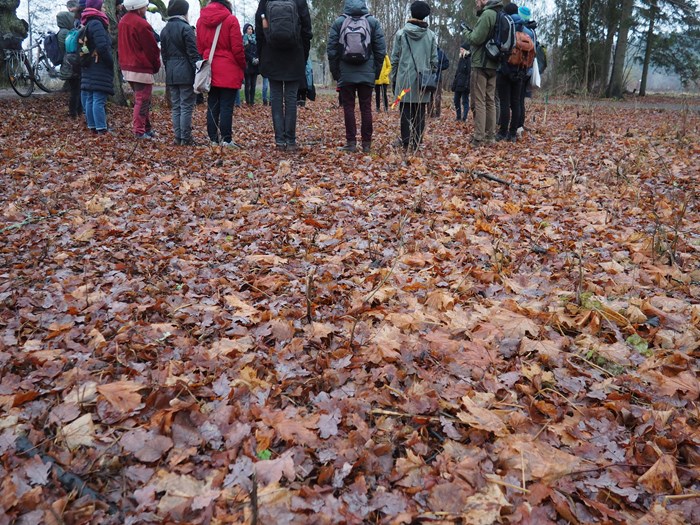A Council of All Beings – communal rituals as transformative practice

This blog post is part of a blog series on exploratory methodologies for knowledge co-production, an initiative of the Co-Creation Lab of the Mistra Environmental Communication programme.
Read more about the Co-Creation Lab on our website.
Blog post written by Sanna Barrineau, PhD candidate at the University of the Sunshine Coast
This blog post is a reflection from the Council of All Beings in November 2019, the concluding workshop in the program series for The Non-Human Animal – Negotiating Bio-relations at Uppsala Art Museum in collaboration with the Climate Change Leadership initiative at Uppsala University. This was a series of interconnected activities that explored the relationship between humans and other species in Uppsala. This workshop was hosted by Pella Thiel and Henrik Hallgren of Lodyn.
The creatures assemble. A circle forms. An invitation to identify oneself in roll call commences. “Beaver is here. I am here representing all beavers.” “Swan is here. I am here representing my kin.” “Water lilies are here…” “Algae are here…” Many have come and it is time to set the framing for deliberations to the group. “We meet in council because our river is in trouble; our lives and our ways are endangered. It is fitting that we confer, for there is much now that needs to be said and much that needs to be heard." Attention focuses on the bowl of water in the circle’s center and voices start to rise. (A common introduction to a Council of All Beings, altered from Joanna Macy accessed on March 5, 2021.)
The international Nature’s Rights movement has a growing presence in Sweden. The work around nature’s rights, where nature has legal standing in the court of law, is helping to intervene in and challenge the anthropocentrism of modern society. At its foundation, and at the heart of a broader Earth Rights movement, lies the argument that human laws have to be integrated into living laws – the idea that the land is the source of the law since ecological systems are the source of all life. Supported by the wisdom of indigenous cultures around the world, these movements invite us to ask ourselves questions about our relationship with the planet in times that are deeply anti-ecological.
The council begins to unfold. Creatures are asked to share their hardships and changes they may be experiencing in the present. “As algae who dwell all along this river, we are experiencing the exponential growth of our kind! Abundant food sources enter the water for us to feast upon, but we are getting sick from the toxic amounts of it entering our home.” “I have no place to lay my eggs undisturbed and raise my young in safety.” “We hear monstrous noises, and the river tastes different…” Stories are heard and there is a sense of collective mourning for the hardships.
Rituals are a powerful source of transformation. The Council of All Beings, developed by Joanna Macy, is a communal ritual which convenes people to speak on behalf of non-human species alongside people speaking as and for humans. It is an experimental democracy, where humans are decentred. A key contribution of this process is that it often helps to bring to the surface ways of being and ways of knowing that builds interspecies solidarity. Through the ludic quality of this multi-species gathering unfolds a co-creative moment; as people step aside from their human identities, the possibility to not just intellectually understand our interdependence with all life on the planet, but to embody it, emerges. Stepping out of our human skins takes preparation, however. Before our Council could begin, we needed to understand ‘what is going on?’. In our particular case in Uppsala: what is the state of the river Fyris? From a more traditional natural science perspective, we were taken through the complexities of the food web in our local river as well as the challenges it is facing due to human activity. And we met many of the river inhabitants via PowerPoint pictures. We, on this occasion, were members of the public, researchers, educators, students, artists, and local politicians. The group was led by two chief facilitators.
Our next phase of preparation took us to a slow, sensory walk south down the river. We attended to the present by participating in the various smells, sounds, and sights. This experiential process was important in establishing a pace, igniting the imagination, and involving the body. We might begin to remember what our inner bodies know: that we are all part of this world together.
“We now invite the human to come forth and hear our stories.” One at a time, a creature may temporarily step aside from its artefact, and stand as human outside the circle, not to speak, but to listen. Directly addressing the human(s) now, the creatures continue to share their experiences. “You have dammed and constrained the river in which I have built my home. Where will my children build their homes?” “You, human, continue to pour chemicals into the soil that run-off into these waters. What life can exist when the algae take over, sealing off all light from the depths?” The indictment continues, and the humans seem to shrink under these creatures’ stories. “Many humans now realize the destruction they are causing; they feel overwhelmed and powerless in the face of the forces they have unleashed. Yet our fate is in their hands. O fellow-beings, what strengths of ours can we share with them, what powers can we lend them?” (Quoted from Joanna Macy’s guide to a Council of All Beings accessed on March 5, 2021.)
As we headed south along the river, we thought about what beings we want to give voice to. Which creatures of the river do we feel called to represent? After spending some long moments being quietly with the river, we made our way up to our final destination where we, with the support of art supplies and a collection of natural materials gathered on the walk, began to construct representations of the creatures we would embody in Council. The construction and the placing of the artefacts in the Council circle felt like an important step in shedding our human identities and allowing ourselves, step by step, to enter a deep and ancient knowing.
Not only was this a practice to mourn the creatures of the river, what it became was a desire to celebrate the river, to learn more about her. As I heard the eloquence that flowed forth in Council and as spontaneous insights emerged both during and after, I felt the strong presence of humility and generosity that I was sure was felt by the other participants as well. In together participating in and acting out this Council, I reflected that what we were giving expression to a self that is often erased in our anthropocentric and industrial culture. The river inside of me started stirring, reminding me of my connection to her.
As I set out on my PhD project, this experience of the Council inspires me to look to all the different actors at play, rather than simply our human companions. What kinds of insights might emerge from a Council around the practices of carbon farming? What concerns may the mycorrhiza in the soil give voice to? To me, these types of approaches have the potential for more caring practices in research with genuine co-creative ethos.
“With these gifts offered, the Council is now concluded.”


